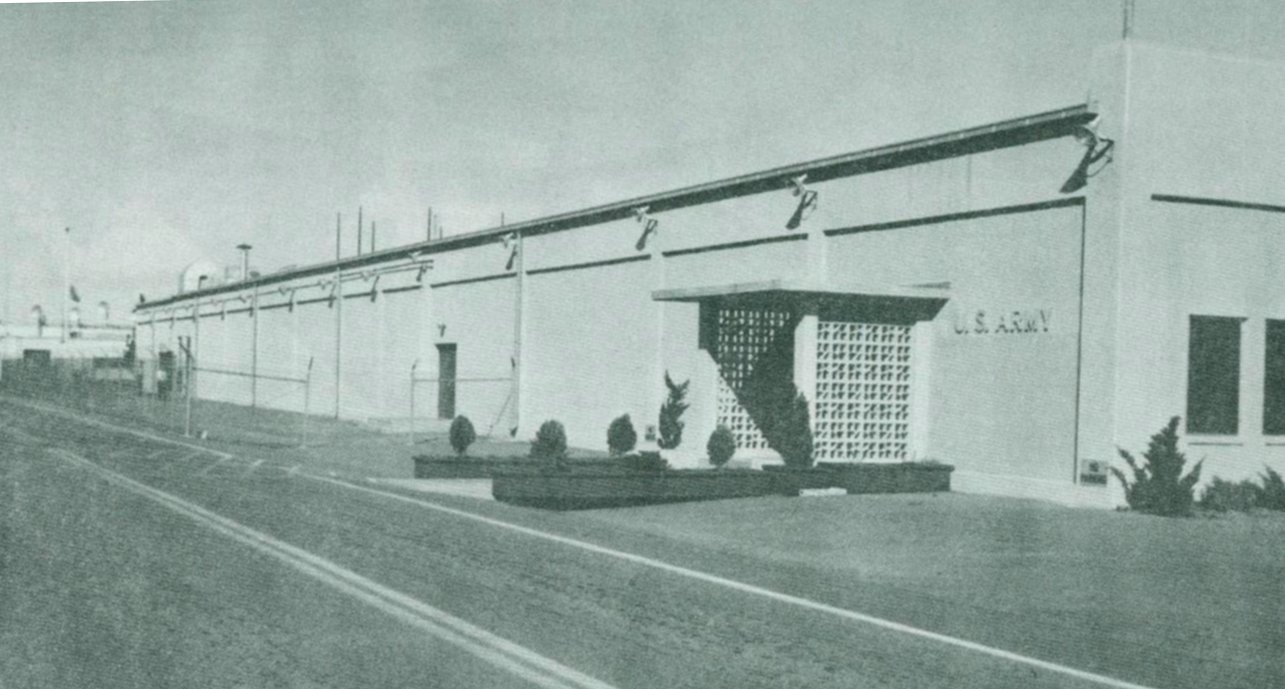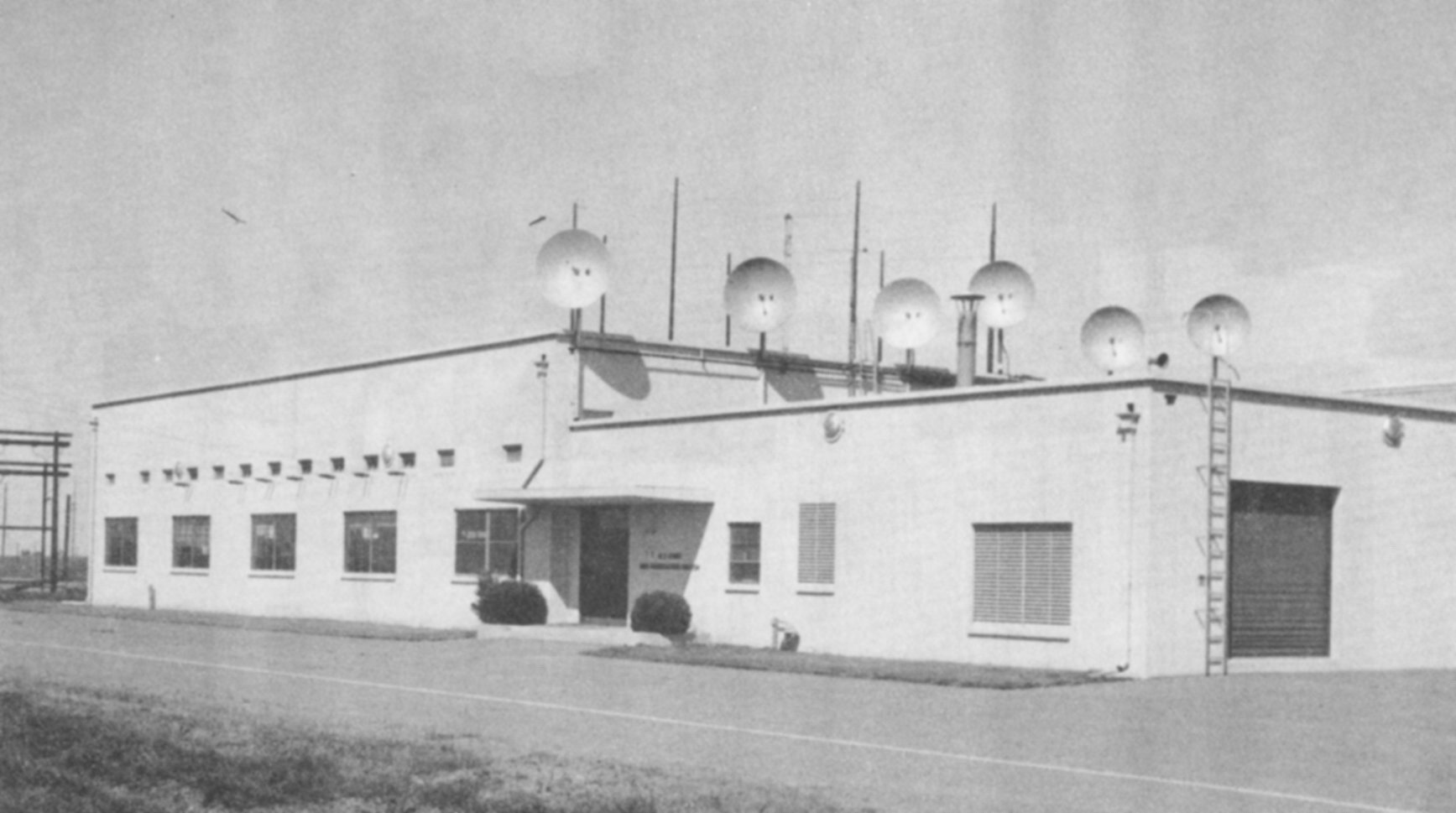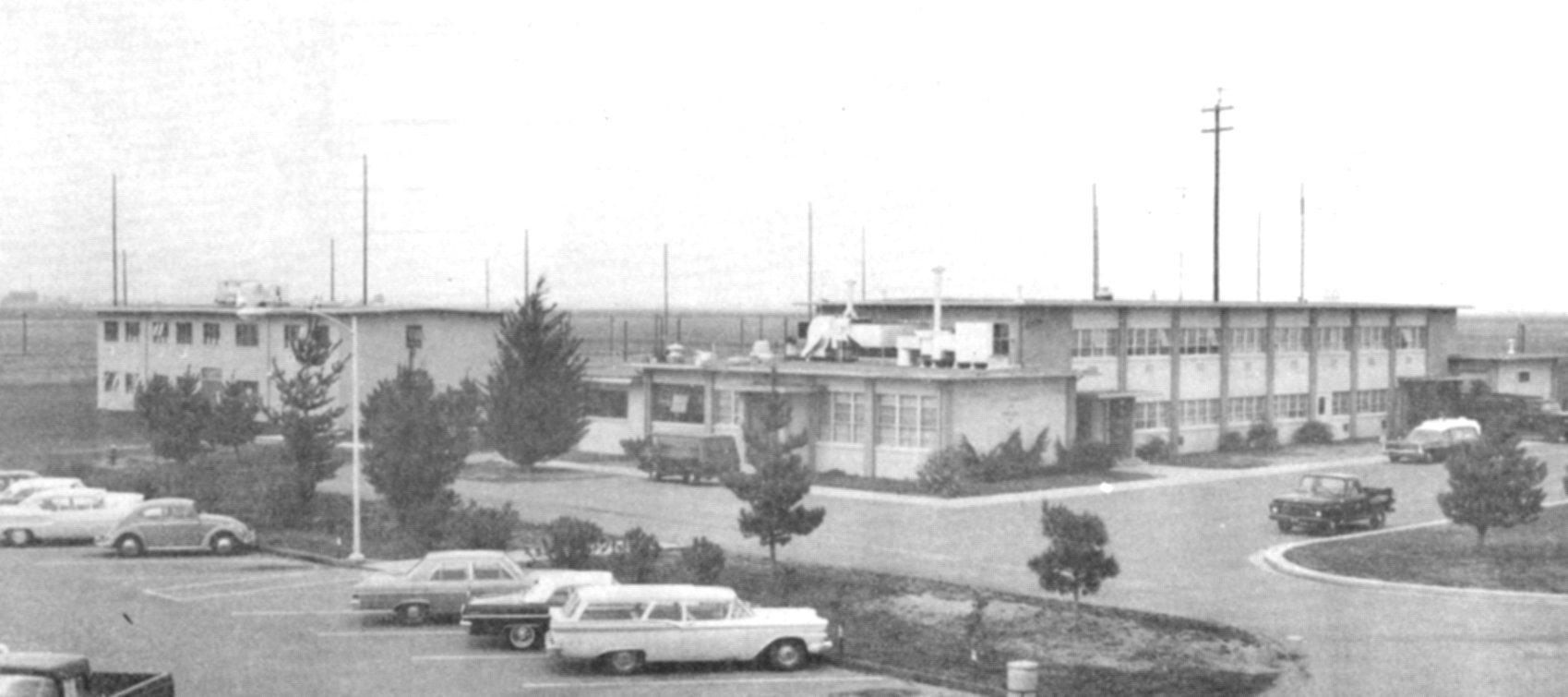




It might have been an after-action report from General William Westmoreland at Military Assistance Command, Vietnam, in Saigon to the Pentagon, the top-secret plans for a military operation in the Mekong Delta, or a routine requisition for bullets or bananas. For several years it was the mission of the U.S. Army Strategic Communications Command (USASTRATCOM) to ensure that such messages reached their destinations in a timely and secure manner. The communications facility near Davis, California, was a key link in the Command's worldwide communications system to make that happen. This somewhat obscure Army post was one of the major relay stations in the Defense Department's Defense Communications System (DCS) during the 1950s and most of the 1960s. The facility was phased out in 1967 due to its technological obsolescence. Since then, it has been the site for a struggling university for Native Americans, which has had a turbulent, even bizarre, history.
Prior to 1953, the Army's major West Coast communications facility was located in the San Francisco Bay area. During World War II, it was a primary relay in the Army Command and Administration Network (ACAN), with a torn-tape teletype relay and high frequency radio transmitter station located at Headquarters, Sixth U.S. Army, Presidio of San Francisco. The accompanying radio receiver station was in nearby Daly City. Shortly after the end of the war, relocation of the station became essential. Both the transmitting and receiver sites had outgrown their land areas, as additional large rhombic antennas were required to bolster communications between the United States and the Pacific area. Also, industry and housing developments, with their man-made radio noise, were closing in on the receiver station.
Consequently, in late 1952, construction of a new receiving station on 1,200 acres in a remote area near Middletown, California, was completed. A microwave relay station was also built atop Mount Vaca to link the Presidio to the new site. The radio transmitter station was then relocated to a site near Davis, California, where 650 acres were purchased from a local sheep rancher. The Army chose the site because the area's high water table was ideal for high frequency radio communications, and it was close to commercial telephone company facilities. The new radio transmitters went on the air in May 1954.
In 1955, the first phase of the Tape Relay Building was completed on the Davis site, and the first fully automatic military tape relay went live in April 1956. The building was expanded in late 1956 and again in 1962. An enlisted men's barracks and mess building, which also included a small PX, a barber shop and a post dispensary, were added in 1957.
All of the equipment was state-of-the-art and provided reliable, secure, high-speed communications for the U.S. Army as well as back-up facilities for the other services. The receiver site included a 14,200 square foot operations building and a 5,900 square foot utilities building which housed emergency power generators, as well as a microwave relay building. The antenna field included twenty-one rhombic antennas and a group of double doublet antennas.
The transmitter/relay complex grew to eleven buildings by 1964, including a 34,600-square-foot administration and operations building, a 13,400-square-foot transmitter facility and the 20,400-square-foot enlisted men's barracks. Emergency generators also provided power in case of outages. The antennas included twenty-two large rhombics and twelve doublets, in addition to several smaller antennas and eight microwave dishes.
The primary mission of the USASTRATCOM Facility, Davis, California, was to "operate and maintain the major DCS Automatic Teletypewriter Tape Relay and associated radio transmitting, receiving and microwave interconnect facilities located at Davis, Middletown and Mt. Vaca, California." It also operated a small data and teletype terminal in Seattle, Washington, and rendered emergency communications support to Sixth Army. In total, the facility was staffed by thirteen officers, 209 enlisted men, and 184 civilians under the command of a lieutenant colonel. The enlisted men were housed on post and were under the commanding officer of the Support Company. Most of the civilians were employed in technical positions in order to minimize disruptions due to the normal turn-over of military personnel.
Operationally, the facility relied on twelve trunk circuits that carried 104 teletype and eleven voice channels. These primary circuits connected the station to other key DCS stations in Melbourne, Australia; Elmendorf Air Force Base, Alaska; Hickam Air Force Base, Hawaii; Camp Drake, Japan; and the East Coast major relay station at Fort Detrick, Maryland. All of these trunk lines relied on high-frequency radio systems, except for one leased undersea cable to Hawaii. In addition, the station served three minor relays and seventy-three tributary stations, covering an area from California to Ohio, Missouri and Texas, giving the facility a diversified primary and alternate-routing capability to facilitate rapid message handling.
As the United States involvement in Vietnam grew during the 1960s, the role of the facility became increasingly important, although few people, other than the men stationed there, knew about the facility. For example, in early 1965, the U.S. had 23,000 advisors in Vietnam. By the end of the year, there were 184,300 troops in country. Consequently, the number of messages processed by the station jumped dramatically that year. In the first quarter, the station relayed approximately 560,000 messages per month. That figure jumped to 997,000 per month during the last quarter, when the attack on the Plei Me Special Forces camp and the Battle of Ia Drang Valley marked the first major battles between U.S. troops and North Vietnamese Army regulars. Fortunately, thanks to good planning, the station was able to keep up with this sudden traffic increase without missing a beat.
However, by the late 1960s, several technological developments converged to render high-frequency radio and torn-tape teletype equipment obsolete. First, the Pacific Scatter System used troposcatter and ionoscatter propagation to link Hawaii to the Philippines via a series of terminals on the chain of islands in the western Pacific, thereby reducing the dependence on high-frequency radio. Second, additional undersea cables provided a reliable means of communications that was not subject to atmospheric disturbances. Third, the Automatic Digital Network (AUTODIN) made it possible to transmit messages digitally much faster than the 100 words-per-minute of the teletype machines. Finally, the introduction of communications satellites further obsoleted high-frequency radio. Consequently, the station was phased out starting in 1967, and by 1970 the Army had completely vacated the site.
During this same time period, similar changes were taking place throughout the Army's worldwide communications system. For example, at the major relay station at Phu Lam, Vietnam, which was then the largest Army communications station after Davis and Fort Detrick, a large AUTODIN terminal went on line in March 1968. In addition, an undersea cable was laid to connect Phu Lam to Okinawa and Japan. Finally, the first military satellite terminal became operational, and high-frequency radio systems were phased out.
In 1970, a group of Native Americans established a tribal university on the site after it had been decommissioned, based on a law requiring surplus federal land be returned to Native Americans. Their application was initially denied, but after prospective students scaled the fence and staged a sit-in, Deganawidah-Quetzalcoatl University was granted the land in 1971. (Deganawidah was the great peacemaker who inspired the founding of the Iroquois Confederacy, and Quetzalcoatl was an Aztec god who symbolizes the principles of wisdom and self-discipline.) Because the spelled out name may be offensive to some tribes, the two-year institution has been known as D-Q University. Its objective was to provide alternative methods of education for Native Americans and to perpetuate their religions and beliefs. The school obtained its accreditation in 1977, and in the mid-1990s its enrollment exceeded 500 students.
However, the school lost its accreditation in 2005 because of poor financial management and for not ensuring that its courses would lead to degrees. The administrators had improperly spent $350,000 from the permanent endowment to pay salaries and expenses. Subsequently, the school lost its federal funding because Native Americans comprised less than fifty-one percent of the students. Finally, some students accused the administration of embezzling financial aid funds, a charge denied by administrators. When officials closed the school after losing its accreditation, some students defied the order to leave and remained in their dorms, despite the bolted gates and the "No Trespassing" signs. A new president was appointed who tried to reopen the school by literally using a bolt cutter to cut the locks. He was later dismissed, being accused of squandering the school's few remaining assets. An effort to resume classes for the fall 2006 semester failed. Since then, a fierce debate has raged among various parties about who is to blame for what and what to do next.
Today, what was once one of the most sophisticated communications centers in the world is totally isolated because even its telephone number has been disconnected. One ex-student lives alone in one of the dorms on food donations from local Native Americans, hosts drum circles, and teaches gardening classes. He hopes to keep the property in compliance with the deed's requirement that the land be used for an educational institution. Whether the Phoenix, the traditional symbol of rebirth, should be included in a future logo of D-Q University remains to be seen.
In summary, the USASTRATCOM Facility at Davis, California, fulfilled the Signal Corps' primary mission of "Getting the Message Through" when high-frequency radio and torn-tape relay centers were the best technologies available for long-haul, strategic communications. It was one of those little known, recognized or remembered Army posts that have contributed to making the U.S. Army the best in the world.





Josef W. Rokus, a freelance writer, volunteer researcher for the U.S. National Park Service and amateur historian, is an occasional contributor to On Point. He has also written genealogy-related articles for the Germanic Genealogy Journal and local history articles for the Fredericksburg, Virginia, Free Lance-Star. His book, The Professionals, depicts the history of the Phu Lam Signal Battalion (part of the 1st Signal Brigade during the Vietnam War), with which he served as the assistant operations officer. From 1966 until 1967, he was stationed at the USASTRATCOM Facility at Davis, California, as the Support Company Commanding Officer.
In July 1952, 647.90 fee acres and 3.65 easement acres were acquired
by the Department of the Army for a total of 651.55 acres. This
site is presently known as Deganawidah-Quetzalcoatl University,
Inc. Also known as Sacramento Valley Radio Transmitter Station;
West Coast Relay and Transmitter Station; U.S.Army West Coast
Relay and Radio Transmitting Station; and U.S. Army Strategic
Communication Command - CONUS, Davis, California Facility (the
site name is referenced by Corps of Engineers real estate historical
file). The site is situated 20 miles west of Sacramento, five
miles northeast of Winters, Yolo County, California. Before acquisition,
the land was utilized for dry farming, production of hay, grain
and pasture
The site was used by the Department of the Army, Signal Corps, to support the Signal Corps Radio Station WVY. There were 9 buildings and miscellaneous improvements deeded to the University described as communications buildings, barracks, storehouses (one with gas station), water pump plants, incinerator, utilities and roads
On 8 December 1969,647.90 fee acres and 3.65 easement acres were reported as excess to the General Services Administration (GSA). On 28 January 1971, the Department of Transportation, Federal Highway Administration conveyed 4.85 fee acres by quitclaim deed to the County of Yolo, State of California. As per the deed, in the event the highway purposes no longer exist, the easement and interest revert to the control of GSA. On 2 April 1971, the Department of Health, Education and Welfare conveyed by quitclaim deed 643.05 fee acres and 3.65 easement acres to Deganawidah-Quetzalcoatl University, Inc. For a period of 30 years from the date of the deed the following conditions apply:
(A) Property shall be utilized continuously for educational purposes in accordance with the proposed program and plan as set forth in the Application of the Grantee dated 17 February 1971 and amendment to application dated 15 March 1971.
(B) Any resell, lease, mortgage, encumber or disposal of property shall be in accordance to applicable regulations. (
\(C) Annually, the Grantee is to file a report on the operation and maintenance of the property evidencing continuous use of the site for the purpose specified in the deed.
(D) Grantee is to comply with Title VI of the Civil Rights Act of 1964 (78 Stat. 241) and requirements of the Regulation of the Department of Health, Education and
Welfare (45CFR Part 80).(El) Grantee to remain a nonprofit institution, organization, or association.
(F) No portion of the property which has been determined to be subject to flooding may be used for construction of any type of facility that could be damaged by such flooding. In addition, the Grantee shall maintain the property and improvements during the 30 year period
The GSA has the right to explore and take
natural resources from the property. In the event of a breach
of any of the conditions interest can revert back to the GSA.
There is a recapture clause in the deed
\
Headquarters Department of the Army General Order (HQDA GO) 44 dated 21 December 1959:
West Coast Relay and Transmitter Station is Organized as a Class I facility at Davis, California, as an activity of the US Army Communications Agency and is redesignated West Coast Relay and Radio Transmitting Station Station Effective 1 January 1960.
US Army Communications Agency (USACA) GO 20 dated 22 December 1959:
West Coast Relay and Transmitting Station, Detachment 7, USACA is organized at Davis, California, assigned Table of Distribution (TD) 11-6423-08 with an authorized strength of 4 Officers, 1 Warrant Officer, 90 Enlisted Personnel, 143 Civilians, effective 1 January 1960.
HQDA GO 13 dated 22 March 1962:
US Army Communications Agency and the US Army Signal engineering Agency, both Class II activities, assigned to Chief Signal Officer, are consolidated and redesignated US Army Strategic Communications Command (USASTRATCOM), a Class II activity assigned to the Chief Signal Officer at Washington DC effective 1 April 1962.
USASTRATCOM GO 21 dated 21 June 1962 and amended by GO 24 dated 29 June 1962:
West Coast Relay and radio Transmitting Station, US Army Strategic Communications Command is redesignated West Coast Relay and Radio Transmitter Station, Detachment 7 (6552-07) assigned to US Army Continental United States (CONUS) Regional Communications Command effective 1 April 1962.
HQDA GO 31 dated 6 June 1962
Assigned to US Army Strategic Communications Command effective 1 April 1962.
USASTRATCOM Message 6784 dated 17 June 1964:
TD CC-6552-07 is withdrawn and TD CC-3070-00 is assigned, effective 20 June 1964
USASTRATCOM-CONUS GO 22 dated 17 June 1965:
Detachment 7, West Coast Relay and Radio Transmitting Station, USASTRATCOM-CONUS (TD CC-3070-00) is redesignated USASTRATCOM-CONUS Davis, California Facility (TD CC-3070-00) at Davis, California effective 1 July 1965.
USASTRATCOM GO 60 dated 29 May 1968:
USASTRATCOM-CONUS Davis,California Facility (TDA CC WOPFAA-00) is discontinued effective 1 July 1968